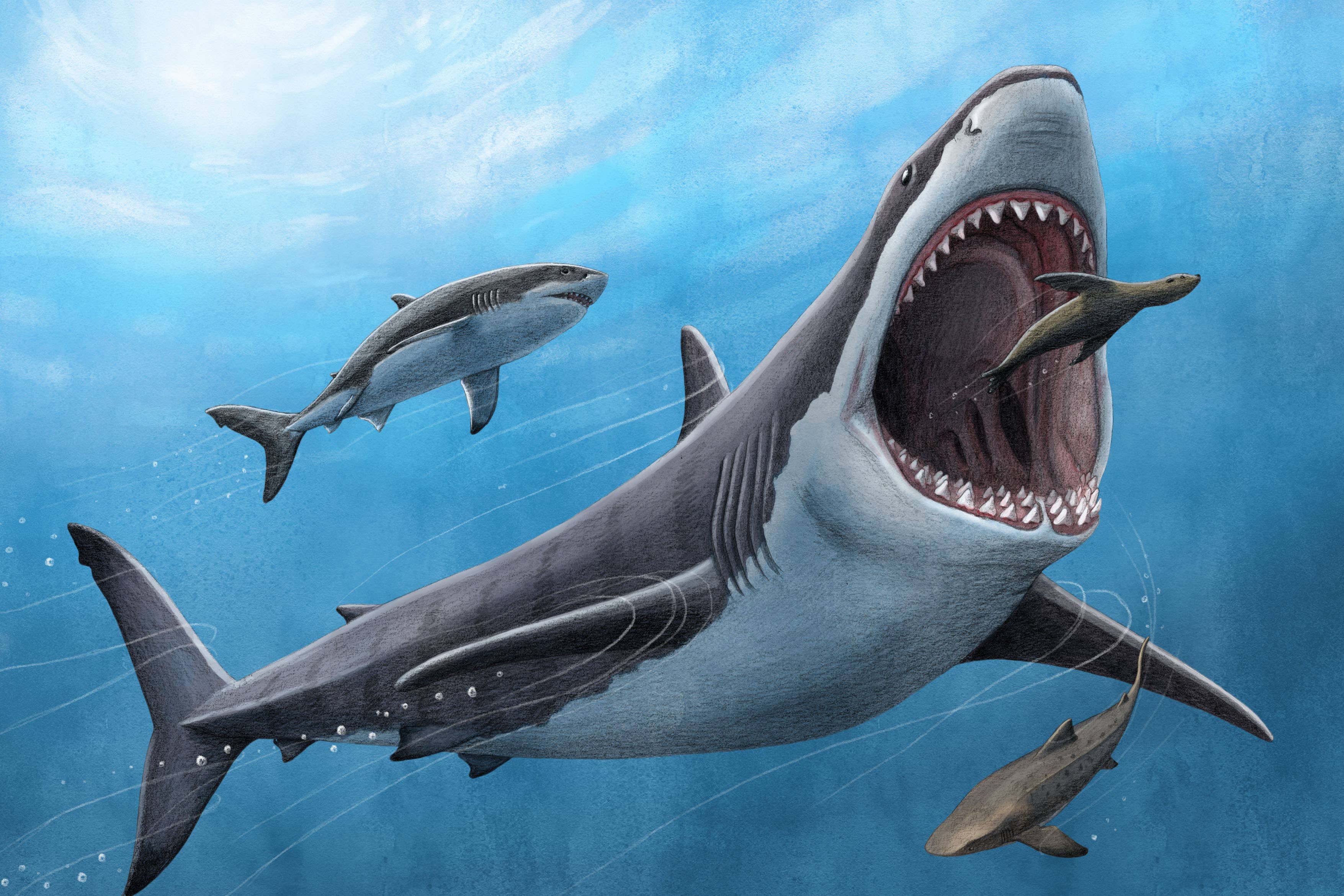Megalodon body temperature ‘was about 7C warmer than surrounding water’
Findings might help explain why the giant shark went extinct 3.6 million years ago

Your support helps us to tell the story
From reproductive rights to climate change to Big Tech, The Independent is on the ground when the story is developing. Whether it's investigating the financials of Elon Musk's pro-Trump PAC or producing our latest documentary, 'The A Word', which shines a light on the American women fighting for reproductive rights, we know how important it is to parse out the facts from the messaging.
At such a critical moment in US history, we need reporters on the ground. Your donation allows us to keep sending journalists to speak to both sides of the story.
The Independent is trusted by Americans across the entire political spectrum. And unlike many other quality news outlets, we choose not to lock Americans out of our reporting and analysis with paywalls. We believe quality journalism should be available to everyone, paid for by those who can afford it.
Your support makes all the difference.The megalodon could maintain a body temperature that was about 7C warmer than the surrounding water, new research suggests.
Based on analysis of tooth enamel from the ancient shark, the findings might help explain why it went extinct 3.6 million years ago.
The temperature difference is greater than those determined for other sharks that lived alongside the megalodon, and is large enough to categorise megalodons as warm-blooded, experts say.
According to the study, the amount of energy the megalodon used to stay warm contributed to its extinction.
Lead researcher Robert Eagle, a UCLA assistant professor of atmospheric and oceanic sciences, said: “Studying the driving factors behind the extinction of a highly successful predatory shark like megalodon can provide insight into the vulnerability of large marine predators in modern ocean ecosystems experiencing the effects of ongoing climate change.”
Maintaining an energy level that would allow for megalodon’s elevated body temperature would require a voracious appetite that may not have been sustainable in a time of changing marine ecosystem balances
Megalodons, which are thought to have reached lengths up to 50 feet, belonged to a group of sharks called mackerel sharks.
Today members of that group include the great white and thresher shark.
While most fish are cold-blooded, with body temperatures that are the same as the surrounding water, mackerel sharks keep the temperature of all or parts of their bodies somewhat warmer than the water around them.
The heat generated by their muscles is stored by sharks, making them different from fully warm-blooded or endothermic animals like mammals.
In mammals, a region of the brain called the hypothalamus regulates body temperature.
In the new study, the scientists looked for answers in the megalodon’s most abundant fossil remains: its teeth.
A main component of teeth is a mineral called apatite, which contains atoms of carbon and oxygen.
The composition of fossil teeth can reveal insights about where an animal lived and the types of food it ate, and — for marine vertebrates — information like the chemistry of the seawater where it lived and its body temperature.
Randy Flores, a UCLA doctoral student and fellow of the Centre for Diverse Leadership in Science, who worked on the study, said: “Because teeth form in the tissue of an animal when it’s alive, we can measure the isotopic composition of fossil teeth in order to estimate the temperature at which they formed and that tells us the approximate body temperature of the animal in life.”
The megalodon’s warmer body allowed it to move faster, tolerate colder water and spread out around the world.
However, this ability may also have been its downfall.
Mr Flores said: “Maintaining an energy level that would allow for megalodon’s elevated body temperature would require a voracious appetite that may not have been sustainable in a time of changing marine ecosystem balances when it may have even had to compete against newcomers such as the great white shark.”
The findings are published in the Proceedings Of The National Academy Of Sciences journal.


